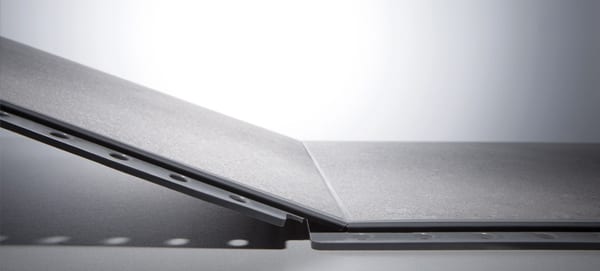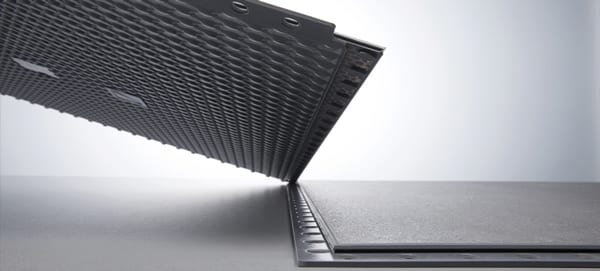Technical


The opportunities and advantages of interlocking dry installation | by Thomas Foschini
The idea of using interlocking floor tiles in renovation projects to avoid demolition costs and make installation quicker and simpler has long been on the agendas of leading Italian ceramic tile manufacturers. The ArsRatio system from Casalgrande Padana aims to overcome the limitations normally associated with this kind of project and offers unique opportunities in terms of integration between the flooring and the service utilities.
From a technical and structural standpoint, ceramic tiles intended for dry interlocking installation are complete systems made up of several layers: the tile itself, the polyurethane edge support and, if required, a layer of fibre-reinforced gypsum (calcium sulphate), a material with excellent thermal conductivity.
“The tiles are prepared in the factory according to the customer’s specifications, with a choice of three different configurations,” explains Mirko Castagnetti, from Casalgrande Padana’s Engineering Division. “The first, AR18, consists of a 10 mm thick tile coupled with a substrate to make a total thickness of 18 mm.” This is the ideal solution for indoor flooring not subjected to heavy dynamic loads, notes Castagnetti. The other two versions, AR28 and AR30, are intended for different kinds of application.
All the solutions in the company’s range use an interlocking system to facilitate installation and avoid the need for adhesives or complex preparation work on the substrate (screed or existing floor). But it is the AR30 version that offers the greatest opportunities in terms of structural integration between the ceramic floor covering and the services.


In practice, the AR30 configuration combines a conventional 10 mm tile thickness with a multilayer substrate (fibre-reinforced gypsum along with polyurethane for support and for the edges, interlocks and joints), which can be suitably hollowed out to create conduits for electrical and data cables. “In this case, the client supplies the layout of service conduits, which are subsequently formed by milling the reverse side of the tiles,” explains Castagnetti. Dedicated columns will house the electrical and data sockets, thereby providing “varying degrees of integration and home automation according to the client’s choices”.
Car dealerships, supermarkets and large retail spaces in general are the main areas of use of this solution, which delivers energy efficiency, durability and ease of maintenance. In particular, it combines the good thermal conductivity of fibre-reinforced plaster (an important factor when installing modern low-temperature radiant heating systems) with ease of maintenance and replacement of individual elements over time at no additional cost due to the absence of adhesives. And compared to alternative solutions on the market, the ArsRatio system also guarantees good waterproofing of the substrate (which is sealed to prevent infiltration of water and other liquids into the underlying layers), making the surfaces suitable for frequent cleaning and sanitisation.
The final version of the system, AR28, consists of a 20 mm thick tile which is ideal for commercial applications with special requirements in terms of load-bearing capacity and/or surface characteristics, for example anti-slip properties. This version is not suitable for integration with services due to the large thickness of the tiles.
Simplicity of installation is a key aspect of Casalgrande Padana’s “ArsRatio package”. But it is important to remember one thing: “In its complete configuration, our flooring solution is composed of up to three materials: ceramic, plaster and polyurethane. This means that cutting to create sub-sizes or inserts must be performed using suitable water-cooled discs.”
As for sizes, Casalgrande Padana offers the AR18 and AR28 installation systems in a 60×60 cm size in the various collections in the catalogue. More options are available for the AR30 system, ranging from 60×60 cm to 60×120 cm, 90×90 cm and 30×60 cm. While a standard 3 mm joint can be used with 10 mm thick tiles, a 4 mm joint is required with extra-thick floors (2 cm) which meet special requirements in terms of load resistance and/or anti-slip properties.
December 2020



